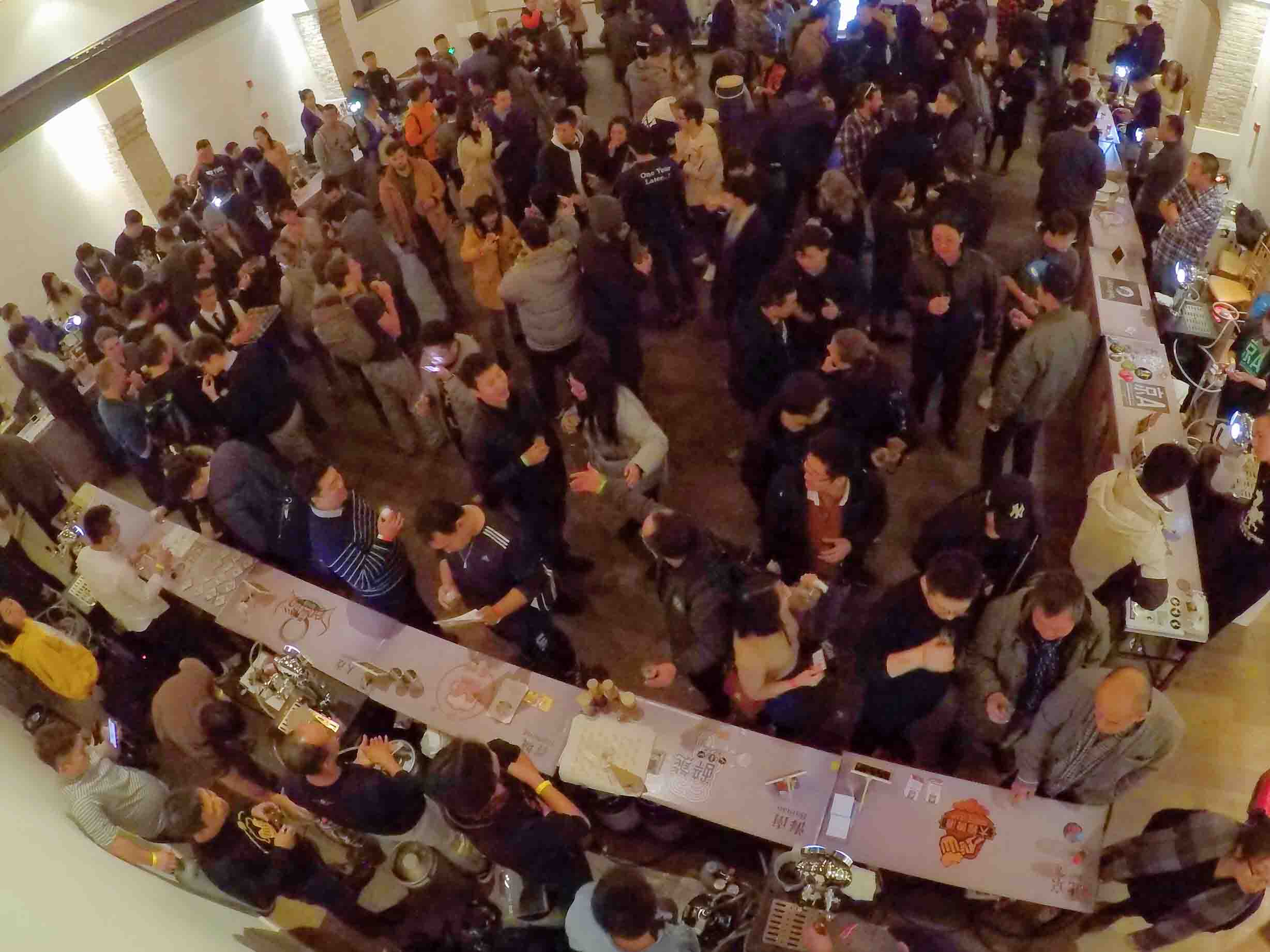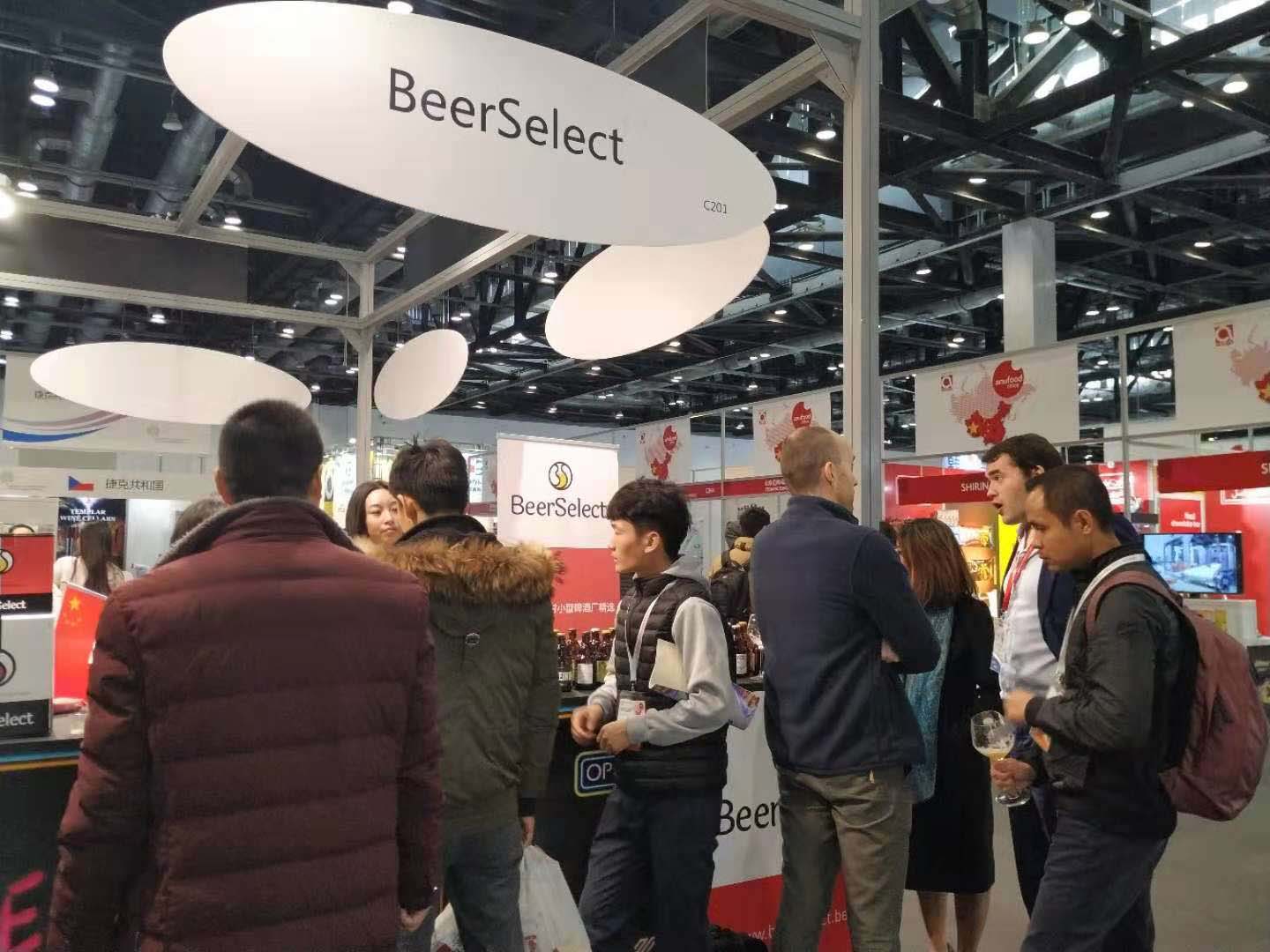

If you've spent time in China, you are probably already familiar with the nation's staple lagers such as Tsingtao, Harbin and Snow. However, over the past few years, the taste for strong, dark and hoppy beer has been growing, and a distinct craft beer culture has emerged across the country, with the Craft Brewer's Association of China (CBAC) festival taking place earlier this month, along-side large import events such as the CIIE and ANUFOOD, which showcased, among other things, beers from international brewers.

The Craft Brewer's Association of China (CBAC) beer festival (Photo Credit: Great Leap Brewery)
The demand for craft beer in China has significantly increased over the last few years, with both the rise of local craft breweries and the arrival of a growing number of foreign brands. In 2017, China's beer market surpassed that of the United States to become the world's largest in value, according to the China Craft Beer Market Report 2018 issued by Drink Sector, a beverage industry research company.
The report indicates that the number of domestic craft beer breweries has rapidly increased within larger urban markets in recent years. Great Leap Brewing, based in Beijing, is a great example, expanding its repertoire from four beers in 2010, to 20 today. Founder Carl Setzer explains, “When we officially opened for business in October 2010, our entire business was located at what is now our Great Leap Brewing Original #6 Brewpub. Since then, in Beijing alone, we have seen almost 15 other craft breweries open up, of varying sizes and production level. This does not include the craft breweries of other places in China, either.”
According to Setzer, this increase is due to China’s status as an emerging market in the world economy. “This means that a lot of people are moving here, coming to visit, coming to study abroad, etc. Because of this, new trends and styles will be quick to both emerge and permeate.”
Alongside new trends brought in from abroad, China's growing middle-income group of consumers, with more disposable income and a desire to purchase premium products, are another driving force behind the burgeoning popularity of craft beer. In his government work report delivered in March this year, Chinese Premier Li Keqiang stated that over the past five years, personal income has increased by an annual average of 7.4 percent in China, outpacing the country's economic growth.
Incomplete statistics also showed that more than 400 million of China's nearly 1.4 billion population had become middle-income earners by March of this year, said He Lifeng, director of the National Development and Reform Commission (NDRC), adding that the figure is still rising.
Although Drink Sector's report indicates that the number of domestic craft beer breweries has increased, it also noted that affluent consumers continue to develop a preference for foreign brands.

The Craft Brewer's Association of China (CBAC) beer festival (Photo Credit: Great Leap Brewery)
In 2014, almost half of all beer imported to China was German, but this trend has since declined, allowing brands from different countries around the world the opportunity to enter the Chinese market. The report noted that in particular, small and medium-sized craft breweries are well suited to target their brands in China at a niche segment of affluent and middle-class consumers who want to try premium foreign products.
Beer Select is a company from Belgium which represents a number of Belgian microbreweries. Export manager, Tarik De Winter, brought a range of craft beer to this year's ANUFOOD, which ran from Nov. 21 to Nov. 23 in Beijing, showcasing a variety of international food and beverage goods to Chinese buyers and consumers. Although there is a market for craft beer in China, said De Winter, many small breweries struggle to find a way to break into the market.
“There are two kinds of breweries in Belgium - the big companies such as Stella, and then there's the backbone of Belgian beer - the small guys in a small local town; their brewing is amazing and innovative. Belgium has 11 million people and hundreds of breweries, so these companies need to export. However, exporting can be difficult - they may not have time to take a plane and get all the certificates that are required to enter the Chinese market. That's where we come in.”
De Winter explained that he came to the first ever CIIE, which ran in Shanghai earlier this month. Since then, his company has hired someone in China, found an importer and are now trying to push distribution.
“I think it’s much more competitive than people think it is and you really need to go that extra mile. It’s also a lifestyle product, and that’s something that we at Beer Select try to push. For example, we will have QR codes on our next shipment, so Chinese buyers can learn about the beer they are drinking, and we also include tasting wheels so consumers can learn about different ingredients and flavors.”

Beer Select at the ANUFOOD event which took place from Nov. 21 to Nov. 23 in Beijing (People's Daily Online/Morag Hobbs)
Earlier this month, the Craft Brewer's Association of China (CBAC) festival took place in Beijing, with 142 unique beers served over three days and four sessions ranging from sours to barrel aged beer to New England style IPAs to uniquely Chinese-inspired styles made with teas, spices, and local yeasts. "What we didn’t see was boredom or disappointment. It wasn’t a festival of yellow, black, and white beers or Bavarian retreads that were so prevalent three years ago," noted Setzer.
"With a culinary history as rich as China, and so many different regional cuisines, the Chinese palate is not only adept at recognizing interesting flavors but strives to find them as well," said Setzer, noting that Great Leap's most popular beers are ones made almost solely with Chinese ingredients. For example, Great Leap’s Honey Ma Gold is made with honey from an apiary near the Great Wall and Sichuan Peppercorn, whereas the Little General IPA is made with 100 percent Chinese ingredients including whole flower Qingdao Flower Hops from Gansu Province.
With a business about to expand even further, Setzer hopes that at some point in the not-too-distant future, he’ll also be able to export his locally made beer. “Once our Tianjin facility is complete in the future, it will have a Phase 1 capacity of 60,000 barrels, and at Phase 3 maximum capacity, it will be producing 500,000 barrels of beer, which will allow us not only to sell nationwide but expand internationally as well.”
As China plans to increase imports to satisfy its ever-increasing domestic demand and growing middle class, and local breweries grow in size and name, the love for craft beer is set to expand throughout the country. "We are very much in the infant stage here, but there is a huge potential to make China the next great market for craft beer as long as people care about producing quality beers in a responsible way," noted Setzer.

 Award-winning photos show poverty reduction achievements in NE China's Jilin province
Award-winning photos show poverty reduction achievements in NE China's Jilin province People dance to greet advent of New Year in Ameiqituo Town, Guizhou
People dance to greet advent of New Year in Ameiqituo Town, Guizhou Fire brigade in Shanghai holds group wedding
Fire brigade in Shanghai holds group wedding Tourists enjoy ice sculptures in Datan Town, north China
Tourists enjoy ice sculptures in Datan Town, north China Sunset scenery of Dayan Pagoda in Xi'an
Sunset scenery of Dayan Pagoda in Xi'an Tourists have fun at scenic spot in Nanlong Town, NW China
Tourists have fun at scenic spot in Nanlong Town, NW China Harbin attracts tourists by making best use of ice in winter
Harbin attracts tourists by making best use of ice in winter In pics: FIS Alpine Ski Women's World Cup Slalom
In pics: FIS Alpine Ski Women's World Cup Slalom Black-necked cranes rest at reservoir in Lhunzhub County, Lhasa
Black-necked cranes rest at reservoir in Lhunzhub County, Lhasa China's FAST telescope will be available to foreign scientists in April
China's FAST telescope will be available to foreign scientists in April